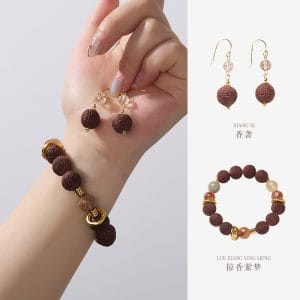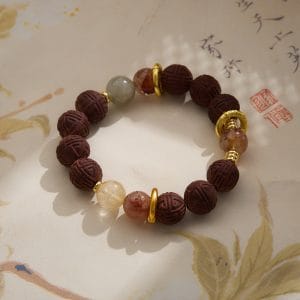
The history of Chinese ceramics is a rich tapestry woven over thousands of years, reflecting the cultural, technological, and artistic evolution of one of the world’s oldest civilizations. From humble earthenware to exquisite porcelain, Chinese ceramics have not only served practical purposes but have also been revered as objects of beauty, symbols of status, and vehicles of cultural expression.
The origins of Chinese ceramics date back to the Neolithic period, around 10,000 BCE. Early pottery, such as that from the Yangshao culture (5000–3000 BCE), was hand-built and decorated with simple geometric patterns and natural pigments. These pieces, often used for storage and cooking, were fired at low temperatures and were porous and fragile. The Longshan culture (3000–2000 BCE) later introduced the potter’s wheel, leading to more refined forms and thinner walls, showcasing early advancements in technique.
During the Shang (1600–1046 BCE) and Zhou (1046–256 BCE) dynasties, ceramic production became more sophisticated. The development of high-fired stoneware and the use of ash glazes marked significant progress. Ceramics from this period often imitated bronze vessels in shape and design, reflecting their importance in ritual and ceremonial contexts. Archaeological finds, such as those from the Anyang site, reveal the growing complexity of forms and decorations.
The Han dynasty (206 BCE–220 CE) saw further innovations, including the production of lead-glazed earthenware. These ceramics, often buried as tomb goods, were adorned with lively depictions of daily life, mythology, and animals, providing invaluable insights into Han society. The famous terracotta army of Qin Shi Huang, though not ceramic in the traditional sense, exemplifies the scale and ambition of Chinese clay artistry during this era.
The Tang dynasty (618–907 CE) is often regarded as a golden age for Chinese ceramics. The export of ceramics along the Silk Road flourished, and new techniques such as sancai (three-color) glazing became popular. These vibrant lead-glazed wares, featuring green, yellow, and white hues, were used for tomb figurines and vessels, capturing the dynamism and cosmopolitan spirit of the Tang era. Meanwhile, the production of white porcelain in northern kilns and celadon in the south laid the groundwork for future developments.
The Song dynasty (960–1279 CE) brought a shift towards elegance and refinement. Ceramics were prized for their subtle glazes, simple forms, and artistic integrity. The famous five great kilns—Ding, Ru, Jun, Guan, and Ge—produced some of the most coveted wares in Chinese history. Ding ware, with its ivory-white glaze and intricate carving, and Ru ware, known for its sky-blue crackle glaze, exemplified the Song aesthetic of understated beauty. Celadon production reached its peak, with Longquan kilns producing jade-like glazes that were highly sought after across Asia and the Middle East.
The Yuan dynasty (1271–1368 CE) introduced one of the most significant developments in ceramic history: blue and white porcelain. Using cobalt blue pigment imported from Persia, Chinese potters created intricate designs under a transparent glaze. This style became immensely popular and laid the foundation for Ming and Qing porcelain exports. The Yuan period also saw the rise of Jingdezhen as a major ceramic center, a status it maintains to this day.
The Ming dynasty (1368–1644 CE) is synonymous with the perfection of blue and white porcelain. Techniques improved, and designs became more complex, often featuring dragons, phoenixes, and floral motifs. The imperial kilns at Jingdezhen produced vast quantities of porcelain for the court and for export, particularly to Europe and the Islamic world. The Yongle and Xuande reigns are noted for their exceptional quality, while the Wanli period saw the development of wucai (five-color) overglaze enamels, adding vibrant reds, greens, and yellows to the palette.
The Qing dynasty (1644–1912 CE) continued to innovate, with techniques like famille verte, famille rose, and enamel painting reaching new heights. Emperors like Kangxi, Yongzheng, and Qianlong were passionate patrons of the arts, commissioning elaborate and technically masterful pieces. Qing ceramics are characterized by their diversity, from monochrome glazes to intricate painted scenes. However, by the late 19th century, political instability and foreign competition led to a decline in quality and innovation.
In the 20th and 21st centuries, Chinese ceramics have experienced a revival. Traditional techniques are preserved and celebrated, while contemporary artists explore new forms and expressions. Ceramics remain a vital part of China’s cultural heritage, admired worldwide for their historical significance and enduring beauty.
From Neolithic earthenware to modern masterpieces, the history of Chinese ceramics is a testament to human creativity and ingenuity. Each dynasty contributed its unique voice, leaving behind a legacy that continues to inspire and captivate. As we hold a piece of Chinese porcelain, we are not just holding an object; we are holding a fragment of history, a story of art, technology, and culture that spans millennia.
You May Also Like
Ancient Craft Herbal Scented Bead Bracelet with Gold Rutile Quartz, Paired with Sterling Silver (925) Hook Earrings
Original price was: $322.00.$198.00Current price is: $198.00. Add to cartAncient Craftsmanship & ICH Herbal Beads Bracelet with Yellow Citrine & Silver Filigree Cloud-Patterned Luck-Boosting Beads
Original price was: $128.00.$89.00Current price is: $89.00. Add to cartGuangxi Zhuang Brocade Handmade Tote – Ethnic Boho Large-Capacity Shoulder Bag
Original price was: $172.00.$150.00Current price is: $150.00. Add to cartThe Palace Museum Paper-Cut Light Art Fridge Magnets: Chinese Cultural Style Creative Gift Series
Price range: $27.00 through $36.00 Select options This product has multiple variants. The options may be chosen on the product page








